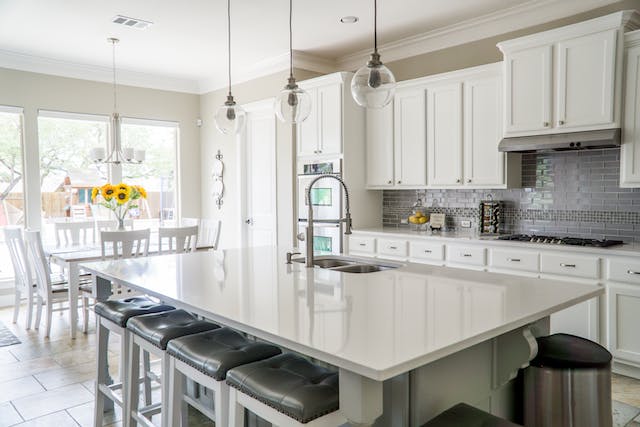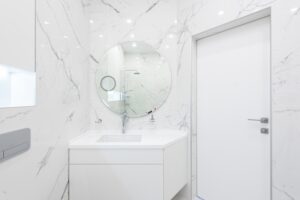
Creating a practical and visually beautiful kitchen environment relies heavily on cabinet design. Kitchens can’t function without cabinets, which also greatly improve the room’s aesthetics. The following are comprehensive guidelines for designing kitchen cabinets:
Think About What You Need to Store
First, you should take stock of your unique space-saving needs. Think about what you need to put away, such as dishes, cutlery, pantry staples, and small appliances. The kind and size of cabinets required may be determined with the use of this analysis.
Plan the Location and Configuration of the Cabinets:
Choose a cabinet arrangement that works best with your kitchen’s design and available space. Common choices are:
- Under the counter space, you’ll find the base cabinets that are perfect for storing your pots, pans, and other bulkier kitchenware.
- Dishes, glasses, and other small objects may be stored neatly and out of the way in wall cabinets that are installed above the counters.
- Larger appliances, such as stoves and refrigerators, may be stored in the taller cabinets.
- There are a variety of corner cabinet configurations available, such as those with
Lazy Susans, pull-out shelves, or diagonal doors.
Material Options for the Cabinets
The quality and lifespan of your cabinets are both impacted by the materials you choose. Common choices are:
- Oak, maple, cherry, and walnut are all examples of solid wood, which provides a classic and organic appearance.
- Medium-Density Fiberboard (MDF) ued often for painted cabinets due to its smooth surface.
- Plywood is often used for cabinet box construction because to its strength and longevity.
Pick Out Your Cabinet Doors
The kitchen’s mood is established by the style of its cabinet doors. Choices might involve:
- These feature a raised panel in the middle and a frame around it, giving off a very traditional and sophisticated vibe.
- Clean lines and a basic, adaptable design make Shaker cabinets a popular option for many kitchen decors.
- These are more contemporary and minimalist in appearance due to their flat central panel
- Use framed glass panels to create an airy, modern look that’s perfect for showcasing your best dinnerware and barware.
Think About Appliances and Electrical Outlets
If you want to store electrical goods like microwaves or coffee makers in the cabinets, you should factor in the need for electrical outlets. This guarantees use while keeping everything looking neat and organized.
Talk to a Qualified Designer
Consider hiring an expert kitchen designer if you need assistance making design choices or want to make sure everything matches. As a result of their extensive experience, they have much to contribute.
Finances and Schedule
Create a financial plan for your cabinet-building project, including the price of all necessary supplies, labor, and extras. Plan a practical schedule for the cabinet’s design, construction, and installation.
Planning ahead, paying close attention to detail, and taking into account your unique demands and aesthetic preferences are all essential when designing kitchen cabinets. Kitchen cabinets may be made more useful and aesthetically pleasing by taking into account the space available, choosing appropriate materials and finishes, and implementing smart storage solutions.

